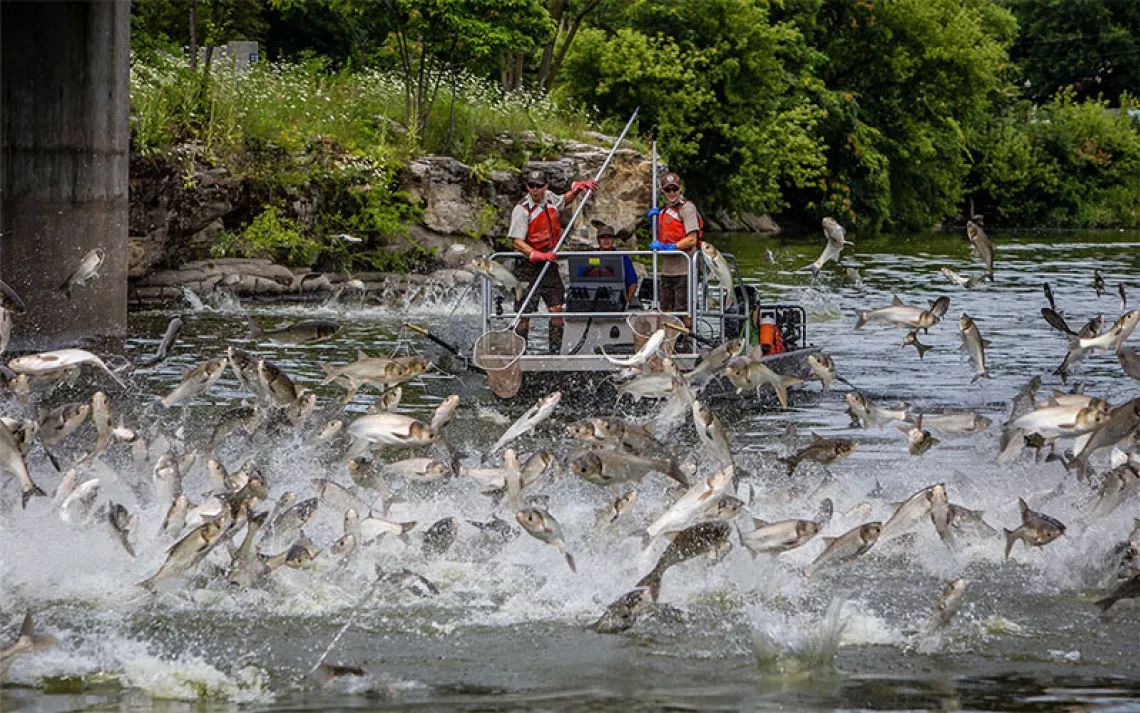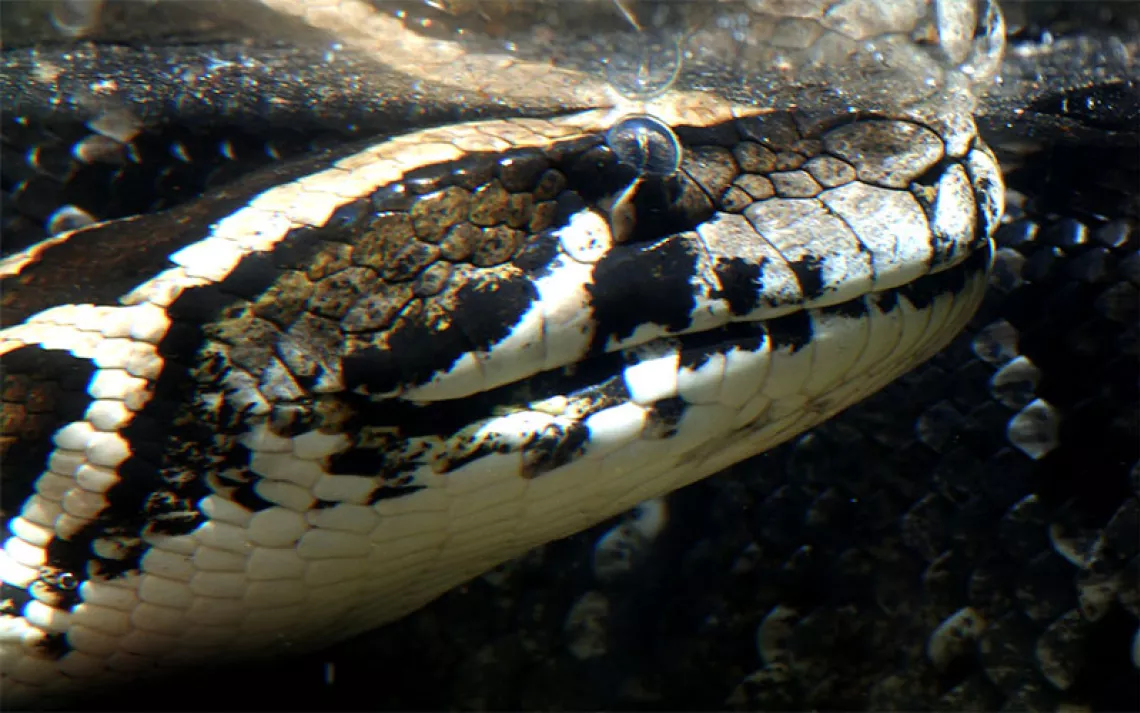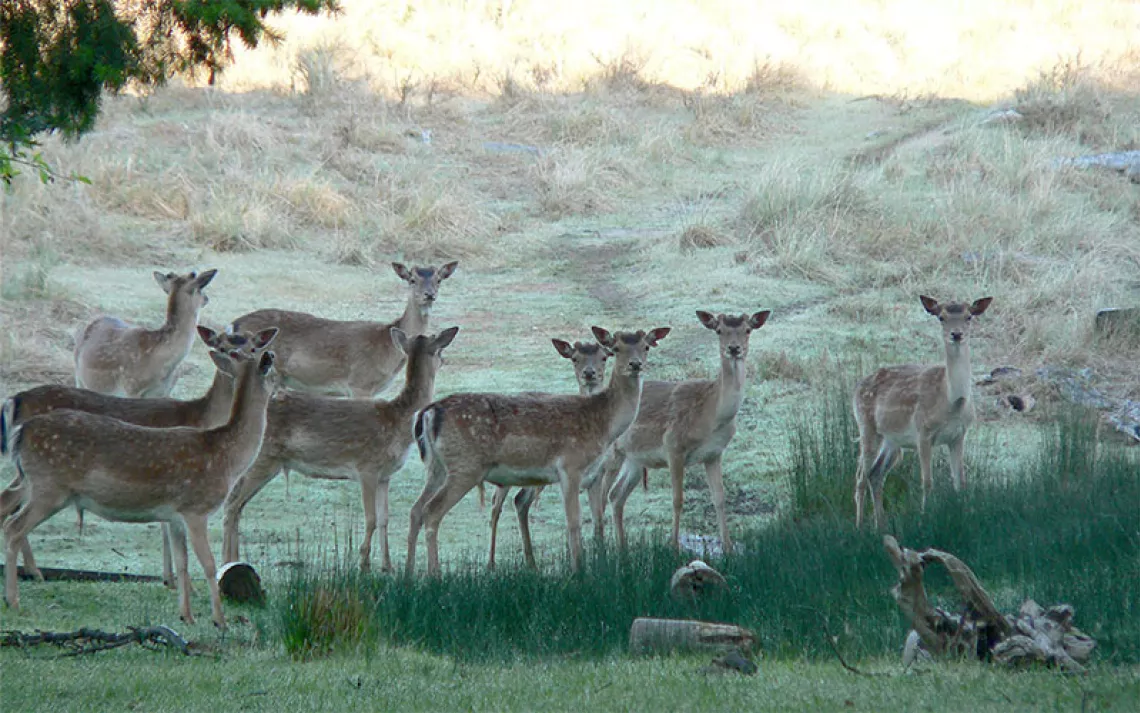Invasive Species in Hawaii Are Eating Everything—Even Themselves
Cannibalism helps invaders out-compete native species

A mongoose feasting on an invasive bird in Hawai'i Volcanoes National Park | Photo by Erin Abernethy
Hawaii is one of the most isolated island chains in the world. Many of its most alluring species are endemic, but for centuries the archipelago’s lush habitats have also attracted invasive species. The islands literally crawl with a mixture of native species, invasive stowaways, and intentionally introduced invaders—some of which were imported specifically to combat the environmental havoc wrought by other non-natives.
It’s thought that feral pigs, rats, and geckos made their way to Hawaii before Western contact in 1778—the pigs intentionally and the rats and geckos as stowaways on Polynesian rafts. Europeans later introduced mongooses from India in an attempt to control the rats. Similarly, cane toads were introduced to eat cane grubs, a non-native sugarcane pest, and then became a major pest themselves. Coqui frogs hitched over on nursery plants in the 1980s.
These human-introduced, non-native species are often able to reproduce and swell in numbers because of their adaptability. Their growth threatens native species with whom they compete for resources. On the Big Island, for example, endangered predators like the Hawaiian owl and hawk are disappearing as rats and mongooses eat their eggs. Habitat degradation is another reason, though not always related to invasive species.

Sign up to receive Sierra News & Views
Get articles like this one sent directly to your inbox weekly.
With this action you affirm you want to receive Sierra Club communications and may vote on policy designated by the Sierra Club Board.
In fact, one of the adaptations that gives invaders an edge is their skill at scavenging. To test it, Erin Abernethy and a team of researchers at the University of Georgia’s Savannah River Ecology Laboratory set out 647 non-native carcasses at three different sites in Hawai’i Volcanoes National Park and Pu’u Maka’ala Natural Area Reserve, including dead mongooses, mice, rats, and coqui frogs, as well as various invasive birds and geckos.
“Using pressure sensitive cameras,” says Abernethy, “we were able to see which animals were the most efficient scavengers. Mongooses and rats carried off the most carcasses, even tiny species like coqui frogs.”
In Volcanoes National Park, the researchers found that mongooses were particularly effective at seeking out scavenged protein sources. Being larger than rats, they were able to travel greater distances over the desolate volcanic landscape. Surprisingly, they also exhibited cannibalistic behavior, scavenging the carcasses of other mongooses.
“This is something that to my knowledge we’ve never documented before from the mongoose,” says Abernethy.
According to the team’s study published in the journal EcoSphere, invasive vertebrates cleared 55 percent of the carcasses and invasive invertebrates the remaining 45 percent, leaving no scavenging prospects for native predators. (The ineffectiveness of native species like the Hawaiian hawk, owl, and raptor was compounded by the fact that their populations have been so greatly reduced.)
Researchers have also concluded that their own practices need to change, especially regarding the trapping of non-native species.
“These are incredibly opportunistic predators, and many of them, especially rats, are nocturnal,” says Aaron Shiels, a research biologist now at the National Wildlife Research Center in Colorado who worked in Hawaii for a decade on management of invasives. “When we conduct rat and mouse trapping in the field using kill-traps, the carcasses are often gone by the time we return to the traps the next day.” Shiels and his team learned to use more live traps to protect the catch from other predators and then euthanize the animals later. To address species that are culturally significant to Hawaiians like feral pigs, scientists will often fence off biologically vulnerable areas rather than trapping and killing the animals.
In its continuing effort to promote biodiversity, Hawaii is trying to prevent new invaders from settling in with measures like the specially trained dogs at seaports and airports that sniff out threatening invaders. Such measures have thus far kept out the brown tree snake, which has already devastated the island of Guam. The hope is that a combination of such strategies will protect both the endemic species and the ecosystems that made the Hawaiian Islands so inviting in the first place.
 The Magazine of The Sierra Club
The Magazine of The Sierra Club



